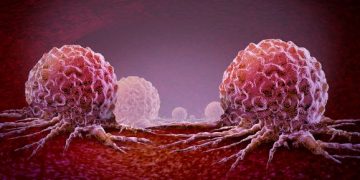Cancer pain symptoms vary depending on the type of cancer and the stage of your condition. The pain you feel may be caused by cancer itself, the treatments you are receiving, or other health problems, such as arthritis.
Before diagnosis – pain can occur when a tumour presses on nerves, bones or organs. This pain can be a warning that something is wrong and your doctor will take steps to diagnose the problem.
Diagnosis – tests to diagnose the cancer can sometimes cause short-term or uncomfortable pain that is usually relieved by taking prescribed medication.
During treatment – chemotherapy, radiotherapy and surgery can all cause pain in different ways. This can include sores in your mouth or throat or skin redness and irritation from the treatment.
After treatment – pain can continue for months or years and can be caused by scars from surgery, lymphoedema (swelling in the hands, feet or lymph nodes), or cancer that has spread to another part of the body.
Advanced cancer – pain can be caused by the tumour pressing on a part of the body or by it spreading to other areas of the body, such as the lung.
It can also be caused by a side effect of the treatments you are receiving, such as nausea from chemotherapy.
Pain from the tumour – pain can be very intense when the tumour presses on a nerve or bone and less severe when it is not so close to a nerve.

Bone pain – When the tumour presses on or spreads to your bones, it can make them stiff and painful. It can also affect your bone strength and movement. This pain is often treated with drugs or therapies that strengthen the bones and reduce the effects of the cancer.
Co-morbidities – Pain can be more likely when you have a co-morbidity, which is a health issue that isn’t related to your cancer, such as arthritis or gout.
Medications for pain – Your healthcare team can help you find the best way to manage your pain. They may prescribe medicines, give you a needle to inject yourself with an anesthetic or use a device implanted in your body to stimulate nerves.
If your pain doesn’t get better with the medications you are given, ask your healthcare team for other options. They may recommend a referral to a pain specialist.
Cancer pain can be very serious. It can interfere with your quality of life and make it difficult to complete daily activities, including eating, sleeping and working.
It can also lead to depression, anxiety and stress.
Your healthcare team can treat these feelings with pain management techniques such as cognitive behavioural therapy and counselling. You can discuss these techniques with your oncology team at every visit.
You can also talk to a mental health professional like a psychologist or psychiatrist. They can help you manage your pain and other symptoms and support your emotional well-being.
People with cancer are more likely to have pain than those without it. The amount of pain you have will depend on many factors, including the stage and type of your cancer, other health conditions you have and how much you are able to tolerate it.









